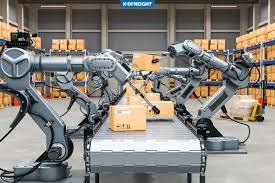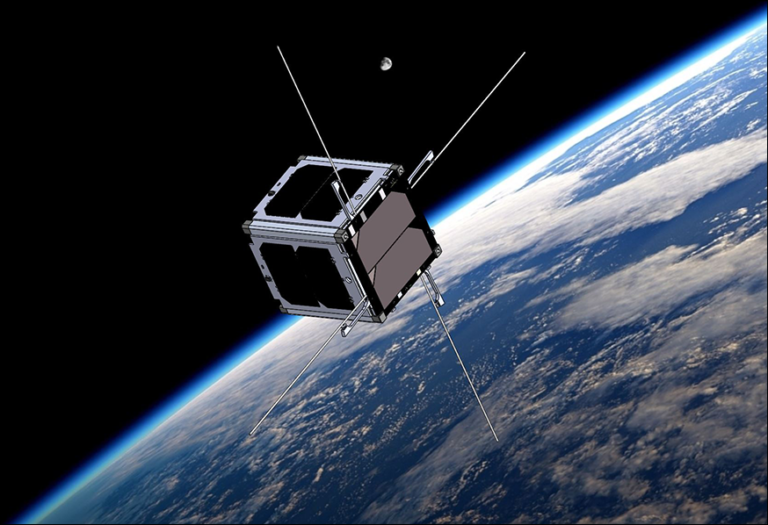Robotics has emerged as a game-changing technology in the field of logistics, revolutionizing the way goods are transported, sorted, and managed throughout the supply chain. From automated warehouses and robotic picking systems to autonomous delivery vehicles, robotics plays a crucial role in enhancing efficiency, accuracy, and productivity in logistics operations. In this article, we explore the multifaceted role of robotics in logistics and its implications for the future of supply chain management.
Automated Warehousing and Fulfillment
One of the primary applications of robotics in logistics is in automated warehousing and fulfillment centers. Robotic systems such as automated guided vehicles (AGVs) and autonomous mobile robots (AMRs) are used to transport goods within warehouses, retrieve items from storage shelves, and deliver them to packing stations for order fulfillment. These robotic systems operate autonomously, following predefined paths or navigating dynamically in real-time, to optimize warehouse layout, minimize travel time, and maximize throughput.
Robotic Picking and Sorting
Robotic picking and sorting systems are revolutionizing the way orders are processed and prepared for shipment in logistics facilities. Robotic arms equipped with sensors and vision systems can identify, grasp, and manipulate items of varying shapes, sizes, and weights with precision and efficiency. These robotic picking systems work alongside human workers to increase picking speed, accuracy, and order fulfillment rates, while reducing labor costs and minimizing errors in the picking process.
Autonomous Delivery Vehicles
Autonomous delivery vehicles, including drones, robots, and self-driving vehicles, are transforming last-mile delivery operations in logistics. These robotic delivery systems are capable of navigating urban environments, avoiding obstacles, and delivering packages directly to customers’ doorsteps with minimal human intervention. By leveraging robotics for last-mile delivery, logistics companies can reduce delivery times, lower transportation costs, and improve customer satisfaction by offering faster and more reliable delivery services.
Inventory Management and Tracking
Robotics plays a crucial role in inventory management and tracking throughout the supply chain, from manufacturing facilities to distribution centers and retail stores. Autonomous drones and robots equipped with sensors and RFID technology can scan and track inventory levels in real-time, monitor stock movements, and identify discrepancies or shortages in inventory. By automating inventory management processes, robotics enables businesses to maintain accurate inventory records, optimize stock levels, and prevent stockouts or overstock situations.
Warehouse Optimization and Layout Design
Robotics technology is instrumental in optimizing warehouse layout and design to maximize storage capacity, minimize travel distances, and streamline material flow. Automated warehouse design software uses simulation and optimization algorithms to analyze warehouse layouts, identify bottlenecks, and optimize storage locations for improved efficiency and throughput. By leveraging robotics for warehouse optimization, logistics companies can reduce operating costs, improve order accuracy, and enhance overall productivity.
Predictive Maintenance and Asset Management
Robotics enables predictive maintenance and asset management in logistics facilities by monitoring equipment performance, detecting anomalies, and predicting potential failures before they occur. Autonomous robots equipped with sensors and diagnostic tools can inspect machinery, conveyor systems, and other assets, identify signs of wear or malfunction, and schedule preventive maintenance tasks to minimize downtime and maximize equipment uptime. By proactively addressing maintenance issues, robotics helps businesses avoid costly repairs, reduce downtime, and extend the lifespan of critical assets.
Workforce Augmentation and Safety
Rather than replacing human workers, robotics in logistics serves to augment human capabilities and improve workplace safety. Collaborative robots, or cobots, work alongside human workers in logistics operations, assisting with repetitive or physically demanding tasks while ensuring safe and ergonomic working conditions. By automating hazardous or strenuous tasks, robotics helps reduce the risk of workplace injuries and ergonomic-related issues, improving employee health and well-being.
In conclusion, robotics plays a transformative role in logistics, driving efficiency, productivity, and innovation across the supply chain. From automated warehousing and robotic picking systems to autonomous delivery vehicles and predictive maintenance solutions, robotics offers a wide range of applications that optimize logistics operations, enhance customer satisfaction, and drive business growth. As robotics technology continues to evolve and mature, logistics companies that embrace robotics will gain a competitive edge in the dynamic and rapidly evolving logistics landscape.







